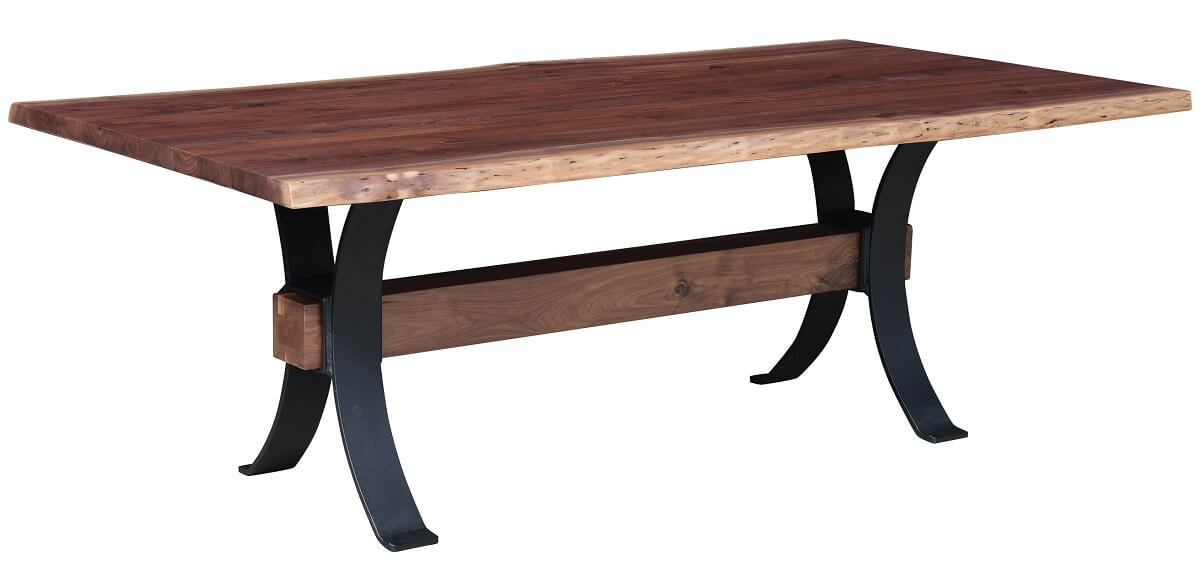Tips for Installing Dining Room Table Legs for a Modern Look
Tips for Installing Dining Room Table Legs for a Modern Look
Blog Article
Expert Tips for Installing Dining-room Table Legs for Maximum Security
When it involves mounting dining-room table legs, achieving maximum security is extremely important for both functionality and aesthetic appeals. The procedure begins with picking the right products and hardware, adhered to by precise alignment and consideration of weight distribution. Each action plays a critical function in guaranteeing that the finished item endures daily use without endangering security or design integrity. Comprehending the subtleties of these components can considerably influence the total outcome. What specific strategies can improve security also further?
Pick the Right Legs
When choosing the proper legs for your dining-room table, it is necessary to consider both functionality and visual appeals. The legs you select will dramatically affect the overall layout and security of the table. Review the table's intended use; if you anticipate constant gatherings, sturdier legs, such as those made from solid wood or steel, might be a lot more appropriate, as they offer increased toughness and assistance.
Following, take into consideration the elevation and design of the legs in relationship to the table top. Common table commonly range from 28 to 30 inches in elevation, so make certain the legs straighten with this criterion for comfort. The design of the legs ought to complement the style of the table top-- whether it be contemporary, rustic, or traditional. For example, conical legs can include a modern touch, while transformed legs may convey a more traditional visual.

Select Appropriate Hardware
How can the ideal hardware improve the stability and long life of your dining-room table? The choice of appropriate equipment is crucial to making certain that the legs of your table are safely attached and able to stand up to normal usage. Top notch screws, bolts, and brackets offer the essential toughness to sustain the weight of the table, along with any extra lots placed upon it during dishes or events.
When choosing screws, select those made from long lasting products such as stainless steel or brass, which stand up to rust and keep honesty in time. The length of the screws is just as important; they should pass through deeply right into the table's structure without compromising stability. For bolted connections, take into consideration making use of lock washers to stop loosening due to resonance or activity.
Furthermore, utilizing edge braces can include extra support, particularly for bigger tables or those with much heavier tops. These braces disperse weight equally and assist maintain the table's form. Making certain that the hardware you pick is proper for the specific materials of your table will certainly better boost its general security and durability, enabling you to appreciate your eating experience for several years ahead.
Ensure Proper Alignment
Proper alignment of eating area table legs is important for both aesthetic allure and practical stability. To attain optimal placement, start by determining the range from the table's edges to the leg accessory factors.
Utilize a degree during setup to validate that each leg is vertical to the table top. It is a good idea to note the desired leg settings on the bottom of the table with a pencil or covering up tape prior to safeguarding them.
Additionally, verify the positioning after the preliminary screws are tightened, as adjustments may be necessary prior to totally safeguarding the hardware. By focusing on appropriate placement, you not only enhance the table's overall style but additionally ensure that it remains functional and steady for years to come.

Think About Weight Distribution
After making certain appropriate placement of the eating area table legs, it is necessary to consider weight circulation to boost stability and performance. dining room table legs. Correct a fantastic read weight distribution is essential in preventing tottering and guaranteeing that the table can support its desired load without danger of tipping or collapsing
When positioning the legs, ensure they are placed at equal ranges from the facility of the table to evenly distribute the weight throughout the framework. Think about the weight of the table top and any type of items that will often hinge on it, such as ornamental items or tabletop appliances. Tables with much heavier imp source surfaces should ideally have legs located closer to the corners, as this makes best use of the base of assistance and decreases the threat of instability.
Additionally, if the table is planned for usage in a high-traffic location, think about using much heavier products for the legs or adding stabilizing components, such as cross-bracing or a lower rack - dining room table legs. These changes can help maintain balance and stop moving during usage. Eventually, a well-considered weight circulation method will considerably improve the table's overall performance, ensuring it continues to be a attractive and functional centerpiece for your eating space
Examination Stability Prior To Usage
Evaluating the stability of the eating area table prior to usage is an essential step that must not be forgotten. If the table reveals instability, identify the legs or joints that may need change.
Next, examine that all screws and bolts are tightened properly. Loose connections can lead to instability and possible damages in time. If needed, utilize wood adhesive on joints to boost security, ensuring try this out to allow appropriate drying time.

Final Thought
To conclude, the installment of dining-room table legs needs careful consideration of materials, placement, hardware, and weight distribution to achieve maximum stability. By picking high-grade fasteners and durable legs, making certain accurate placement, and distributing weight equally, the architectural integrity of the table can be dramatically improved. Carrying out a stability examination prior to routine use further guarantees that the table will withstand everyday pressures, thus providing a reputable and safe eating experience.
When it comes to installing eating space table legs, attaining maximum security is paramount for both functionality and aesthetics. The legs you pick will significantly influence the general layout and stability of the table (dining room table legs). Common eating tables normally vary from 28 to 30 inches in elevation, so ensure the legs straighten with this standard for comfort.Appropriate positioning of eating area table legs is crucial for both visual allure and functional security.In conclusion, the setup of dining area table legs requires cautious consideration of materials, equipment, placement, and weight circulation to accomplish optimum security
Report this page